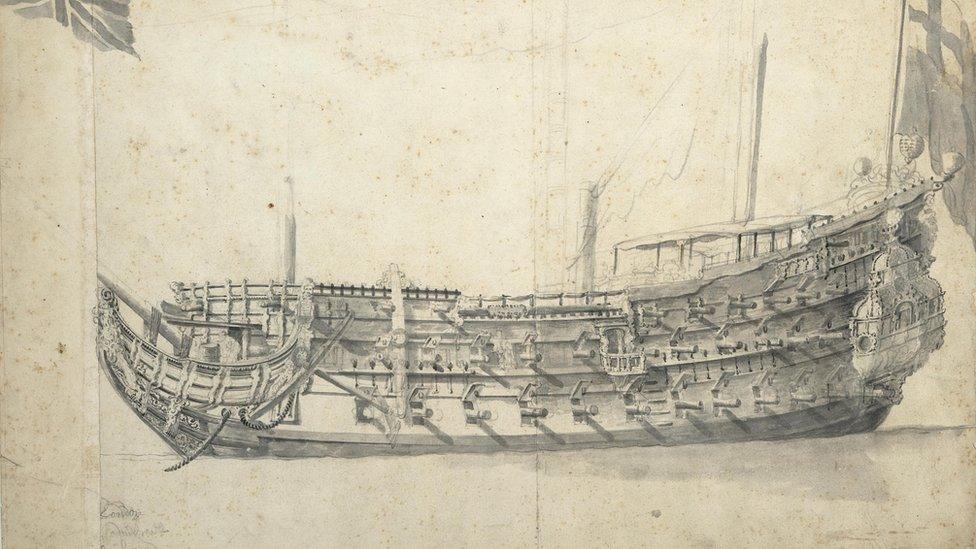Lantern base find may reveal ship explosion cause
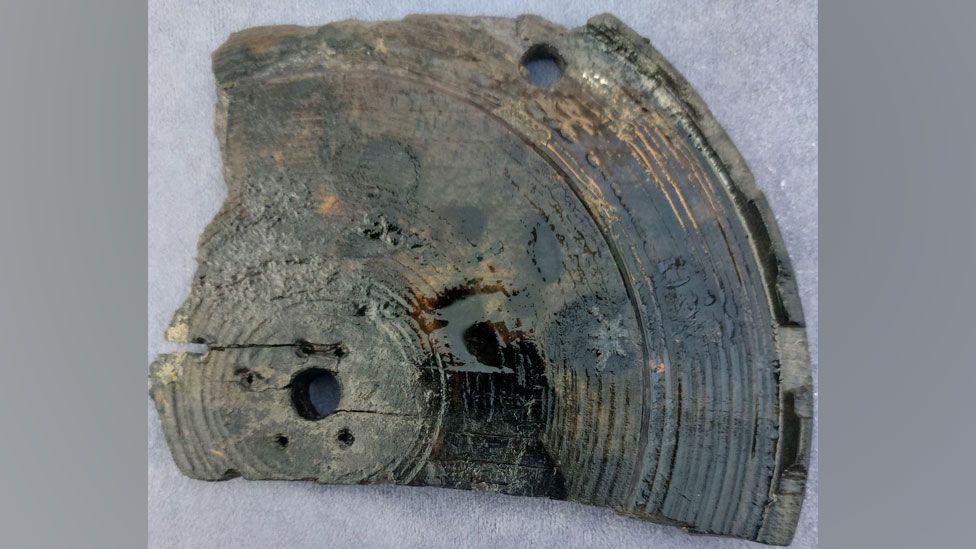
The wooden lantern base and top show scorch marks
- Published
The remains of a scorched wooden lantern base retrieved from a 17th Century warship wreck may help explain what caused its explosion.
The London blew up 360 years ago off the Essex coast near Southend-on-Sea and an astonishing array of well-preserved finds have been retrieved from it in recent years.
Diving resumed this month thanks to two companies that donated most of the £13,000 needed to replace the dive ship's condemned engine.
The lantern base, candles and a wooden tool handle were among objects recovered since then, said Steve Ellis, one of Historic England's licensed divers.
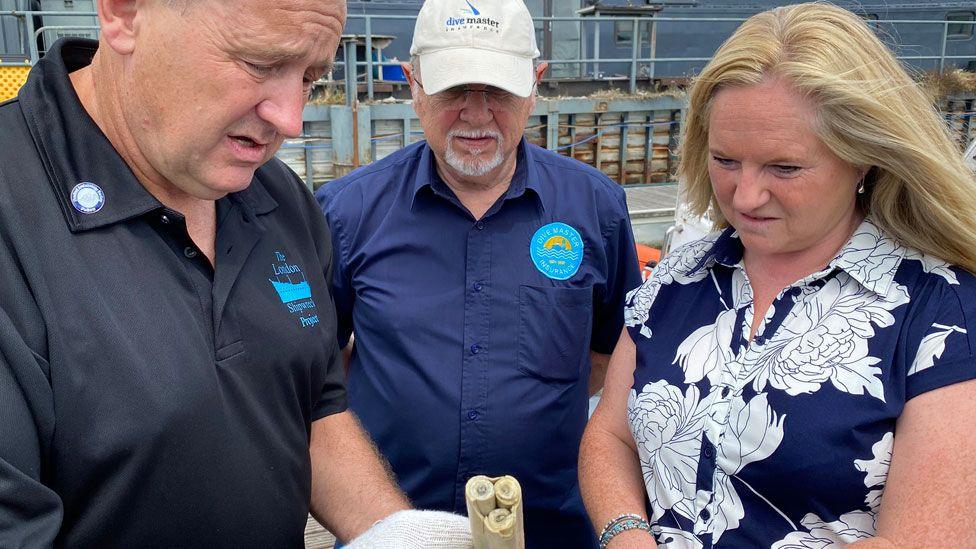
The volunteer-led project nearly failed to go ahead this year after its dive ship's engine was condemned
"Last year we found a wooden lantern top and while on our latest dive, we retrieved the base of a different wooden lantern and both have scorch marks," he said.
"They wouldn't have had glass, just wooden battens and, with the flame not being that secure and on a ship full of gunpowder, is this one of the reasons she blew up?
"That's what I love about diving the wreck, the more you find, the more questions you ask - it's never boring."
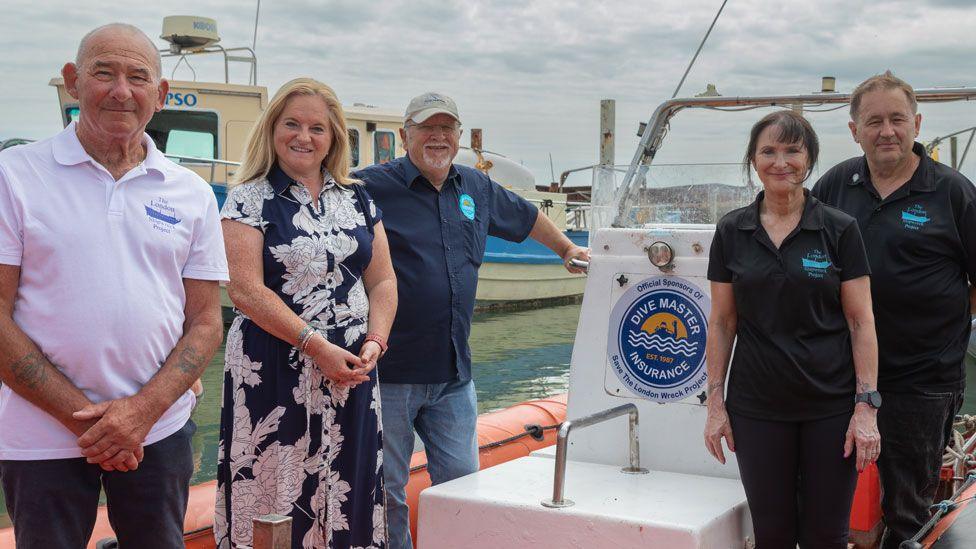
Dive Master Insurance and DP World, which run London Gateway Port on the Thames Estuary, donated most of the money needed for a new engine
The warship is one of England's most important shipwrecks and is a Protected Wreck Site, external.
It is being rapidly eroded because of its location at the end of the hugely busy Thames Estuary shipping lanes.
This also means seabed sediment is constantly being churned up, resulting in terrible visibility, "like diving in blancmange", Mr Ellis said.
"I came across some beef tallow or other animal fat candles, packed in threes, which felt like modern plastic," he said.
Another exceptional find was a wooden handle. All the items will go to Historic England for conservation.
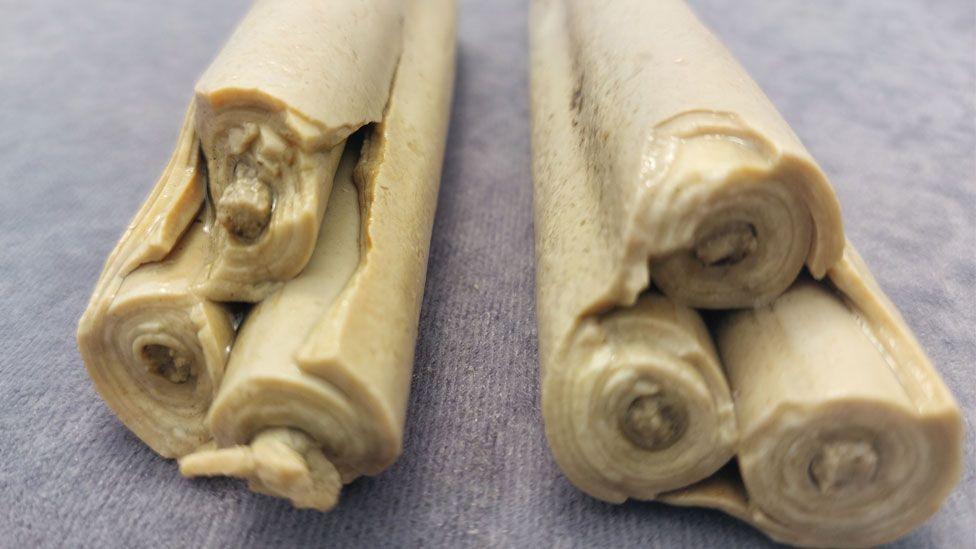
The ship's contents, such as these candles, offer a "time capsule" of 17th Century life
The London was on its way to fight in the second Anglo-Dutch War in 1665, when it exploded while moored at The Nore in the Thames Estuary.
Many women and children, families of the sailors, were on board and the disaster was written about by diarist Samuel Pepys.
Mr Ellis said the area the dive team was currently working on was "a bit more like the Mary Rose [a Tudor wreck], a brilliant time capsule, external, with complete boxes, complete bottles - everything seems to be in order".
"Every dive brings us closer to understanding the lives, struggles, and stories of people of that era, before this information is washed away and lost forever," he added.
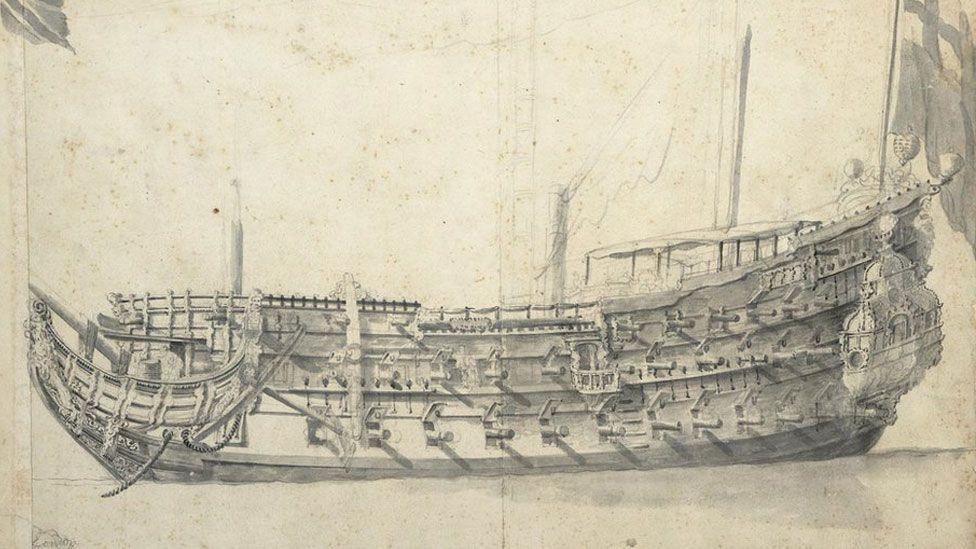
The ship was crowded with women and children, the families of the sailors, when a gunpowder explosion caused it to blow up
The project was put at risk when the dive team's boat engine was condemned a few months ago.
Mr Ellis said the dive team was "profoundly grateful" to DP World and Dive Master Insurance, which contributed £6,000 each towards a new engine, alongside £1,000 in public donations.
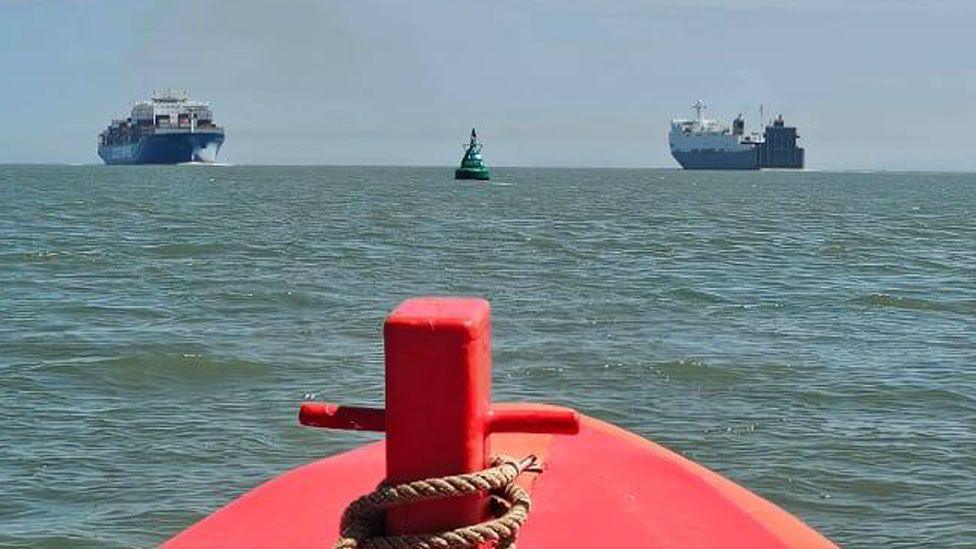
The wreck is located in one of the world's busiest shipping lanes and the seabed is churned up by large ships passing nearby
Get in touch
Do you have a story suggestion for Essex?
Follow Essex news on BBC Sounds, Facebook, external, Instagram, external and X, external.
Related topics
- Published24 July 2024
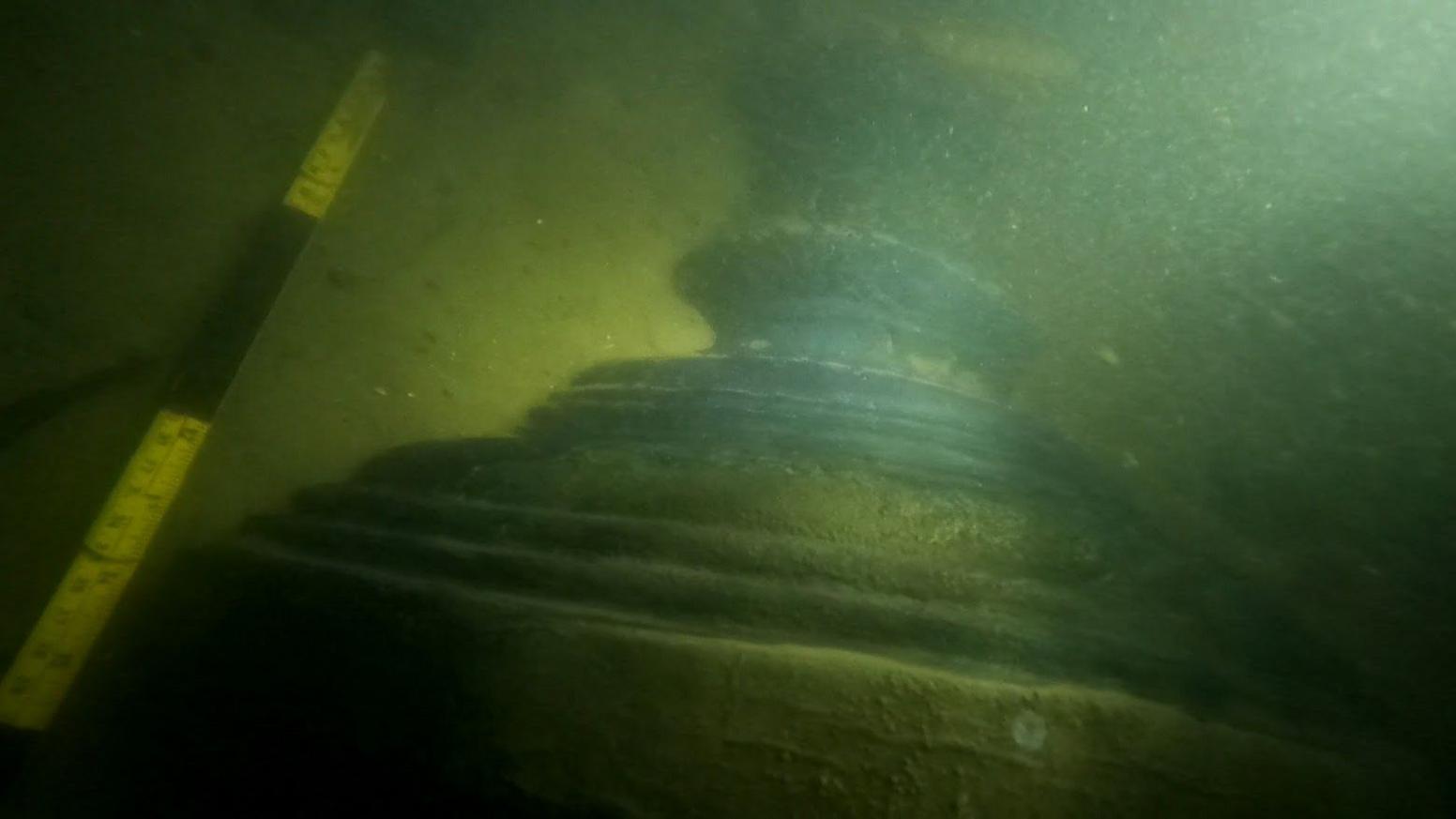
- Published6 July 2020
